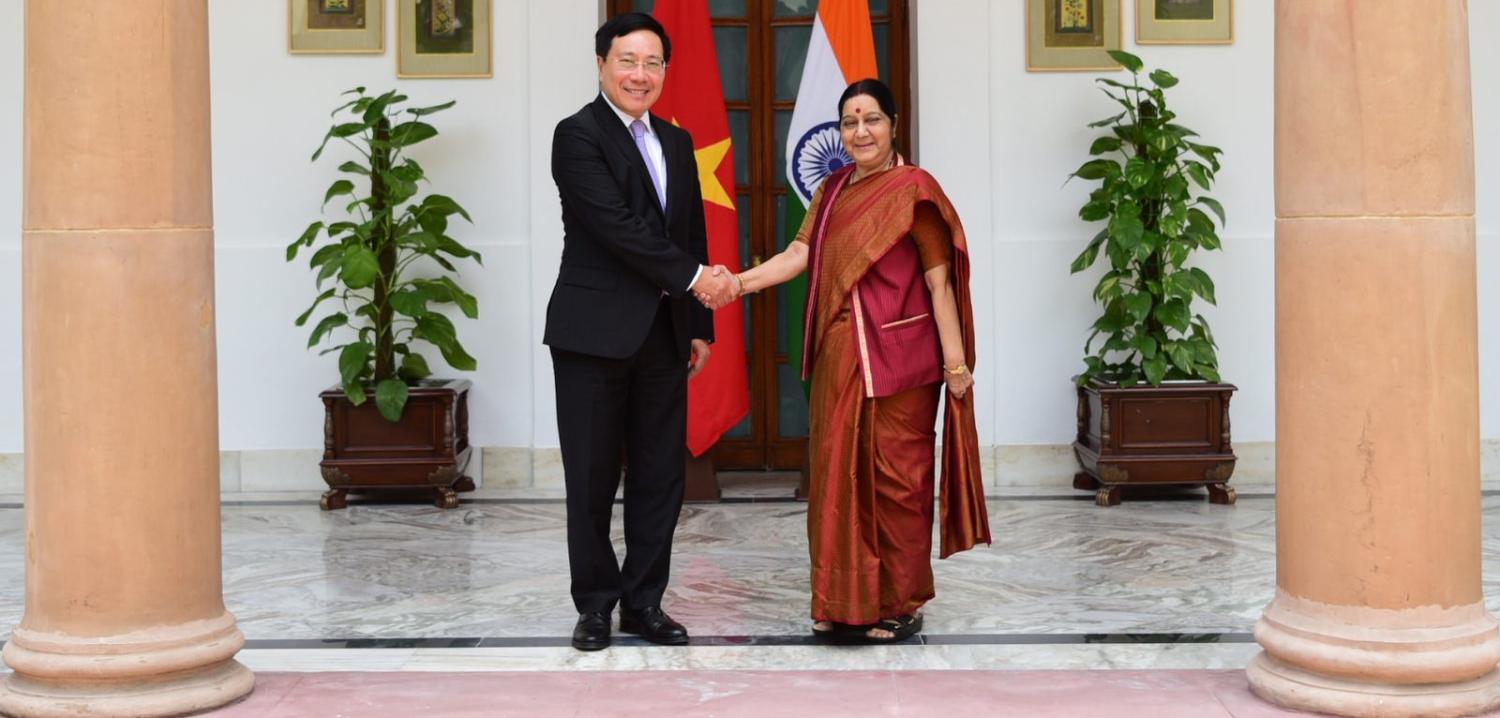Vietnam's recent request to India to play a more prominent role in Southeast Asia and the South China Sea did not come as a total surprise. It's not the first time Vietnam has asked a nation with no direct interest in the area for backing – it made a similar call to South Korea a few months ago. While not much appears to have come of that request (unsurprisingly, given the nature of Vietnam and South Korea's relationship – big on business and investment and low on strategy), India is a different proposition entirely.
Vietnam and India already cooperate across multiple areas from technology to education and boast not just a relatively long history of diplomatic ties (45 years), but cultural ties going back hundreds of years to the Cham Empire. During a visit by India's Prime Minister Narendra Modi last year, Vietnam named India a comprehensive strategic partner, elevating it to the highest echelon of cooperation.
At last week's Delhi Dialogue (an annual meeting ASEAN members and India), Vietnam's Foreign Minister and Deputy Prime Minister Pham Binh Minh said: 'India and Vietnam share political and economic interests. As the future unfolds we have reason to be optimistic. ASEAN will benefit from India’s experience of resolving maritime issues in a peaceful manner.' Minh also spoke of Vietnam's hopes that India 'will continue to partner our efforts for strategic security and freedom of navigation in South China Sea on the basis of international law and legal conventions'. India is a fan, like Vietnam, of the rules-based order (even when an arbitration ruling goes against it), particularly in the South China Sea where the two nations have various overlapping interests.
A few days after Minh spoke, Vietnam granted the Indian Oil firm ONGC Videsh a two-year extension to explore a Vietnamese oil block in an area of the South China Sea contested by China and Vietnam. The oil company first signed a contract to explore Block-128 back in 2006. In 2012, it exited the area briefly in what the firm said was a commercial decision, but what many in Vietnam believed was also linked to Chinese pressure.
In 2012 the head of the Indian Navy DK Joshi said that the navy would protect ONGC in the South China Sea. While many in India are circumspect on the benefits of maritime activity so far from home, Joshi's assessment that the rapid modernisation of the Chinese navy is a cause for concern for India is more widely shared.
The Non-Alignment 2.0 book, put together by Indian foreign policy experts, states that partnerships in East Asia, 'may help delay, if not deter, the projection of Chinese naval power in the Indian Ocean' – in other words, keep China busy and constrained in East Asia, and it may not have the time or inclination to move west to the Indian Ocean.
The high-level comprehensive strategic partnership between India and Vietnam is equally important for Vietnam which shares the same worries about increasing Chinese power. It regards naval activity by larger nations like India and the US in the area as a useful deterrent against China.
It welcomes all concrete and rhetorical commitments to freedom of navigation in the ‘East Sea’, as it terms it, that could help dissuade China from any potential aggression, expansion or another episode like China's 2014 violation of Vietnam’s EEZ. While China has continued to expand its presence, maritime cooperation and supplies from major states such as India (which increased its existing $US100 million line of defence credit to $US500 million last year), the US and Japan helps Vietnam to at least maintain its position.
And yet, while Chinese media regards Indo-Vietnamese cooperation with suspicion and arms sales to Vietnam of the Indian Akash missile or the potential sale of the Russian-Indian BrahMos with outright hostility, Vietnam’s main aim is to keep the peace.
What much reporting on this issue often overlooks is the fact that both Vietnam and China take pains to not be at loggerheads and to agree where possible. They have guidelines on how to settle agreements and a joint standing committee to overseas relations more generally. They meet to discuss the South China Sea, even as they openly disagree. For Vietnam there is a second reason, too – activists often accuse Hanoi of weakness on China. These criticisms that can reach a wider audience, as even those who are less politically engaged seethe at perceived Chinese aggression.
While the South China Sea is not directly in India’s interests, containing a rising China now seems to be in order to prevent what Ram Madhav, senior leader of India's BJP, recently termed a '21st century version of neo-colonialism'.
For Vietnam, more friends is always the better option.

